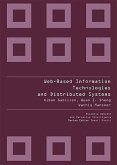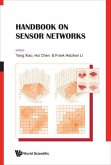Motor monitoring, incipient fault detection, and diagnosis are very important and difficult topics in the engineering field. These deal with motors ranging from small DC motors used in intensive care units to the huge motors used in nuclear power plants. With proper machine monitoring and fault detection schemes, improved safety and reliability can be achieved for different engineering system operations. The importance of incipient fault detection can be found in the cost saving which can be obtained by detecting potential machine failures before they occur. Non-invasive, inexpensive, and reliable fault detection techniques are often preferred by many engineers. There have been a large number of techniques, such as expert system approaches and vibration analysis, developed for motor fault detection purposes. Those techniques have achieved a certain degree of success. Due to the complexity and importance of the systems, there is a need to further improve existing fault detection techniques. A major key success in fault detection is the ability to use appropriate technology to effectively fuse the relevant information to provide accurate and reliable results. The advance in technology will provide opportunities for improving existing fault detection schemes. With the maturing technology of artificial neural networks and fuzzy logic, the motor fault detection problem can be solved using an innovative approach based on measurements that are easily accessible, without the need for rigorous mathematical models. This approach can identify and aggregate the relevant information for accurate and reliable motor fault detection. This book will introduce the necessary neural network and fuzzylogic technologies, describe the advantages and challenges of using these technologies to solve motor fault detection problems, and discuss several design considerations and methodologies in applying these techniques to motor incipient fault detection.








